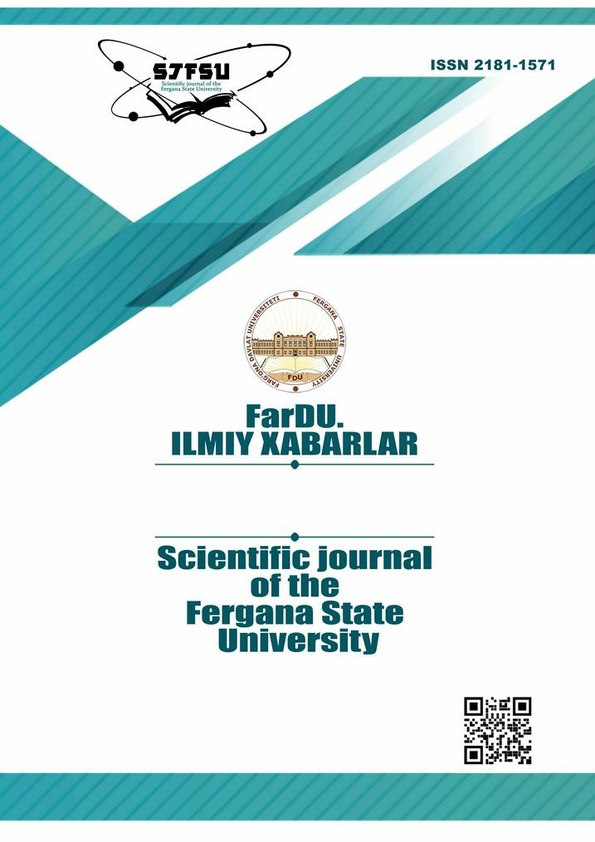REFLECTION OF SAJ’I MUTARRAF USED IN THE TEXT "BOBURNOMA" IN ENGLISH TRANSLATION
Keywords:
saj, toponyms, prose, rhyming, military terms, alternative, manuscript, original text, linguistic culture, historical figures.Abstract
This article discusses about the translation of the rhyming saj’s in the "Boburnoma" that were originally used in the translations made by English and American translators (Leyden-Erskine, A.S. Beveridge and W. Thackston). The skill of the translator, the scholar of oriental literature, the style of the original author, the reflection of the national identity and the spirit of the time in the translation are expressed. It is also explained about the translator's skill of choosing words, the important aspects of preserving the spirit of the original in the translation and reflecting it in the translation.
References
Musaev Q. Tarjima nazariyasi asoslari. -Toshkent. «FAN» 2005
Sarimsaqov B. O‘zbek adabiyotida saj’. -Toshkent. «FAN» 1978
Zahiriddin Muhammad Bobur. «Boburnoma» -Toshkent «Sharq» nashriyot-matbaa aksiyadorlik kompaniyasi bosh tahririyati. 2002
Заҳириддин Муҳаммад Бобур энциклопедияси. – Тошкент. «Шарқ» 2014
Leyden J., W.Erskine. Memoirs of Zehired-din Muhammed Babur, Emperor of Hindustan.− Edinburg, 1826.
Gʻapporov М., Qosimova Р. Ingliz tili grammatikasi.-Toshkent. «Тuron-iqbol» 2010
Beveridge A.S., The Bābur-nāma in English (Memoirs of Babur), Translated from the Original Turki Text of Zahiru’ddin Muhammad Babur Padshah Ghazi by Annette, Susannah Beveridge. 2 Vols, – London, 1922; Repr, in one Volume, – London, 1969; – New Delhi, 1970; – Lahore, 1975.
https://dictionary.cambridge.org/dictionary/english/strike-a-blow-for
The Baburnama. Memoirs of Babur, Prince and Emperor, Translated, Edited, and, Annotated by Wheeler M., Thackston. – New York & Oxford, 1996
Butayev Sh., Irisqulov A., English-Uzbek Uzbek-English Dictionary. «Фан».Тошкент.2008.
Oxford Advanced learner’s Dictioary.Oxford Unoversity Press, India 2016.
Саломов Ғ. Таржима назариясига кириш.-Т.Ўқитувчи,1978
Downloads
Published
Issue
Section
License
Copyright (c) 2023 Scientific journal of the Fergana State University

This work is licensed under a Creative Commons Attribution-NonCommercial-NoDerivatives 4.0 International License.
How to Cite
Most read articles by the same author(s)
- Fayzullo Saidkulov, Ravshan Mahkamov, Arzigul Kurbanbayeva, Shuhrat Samandarov, Mohira Nurmanova, STUDY OF CALLOID CHEMICAL PROPERTIES OF NEW SURFACTANTS BASED ON PHENOL , Scientific journal of the Fergana State University: No. 1 (2023): Scientific journal of the Fergana State University (Exact and natural sciences)
- , THE ROLE OF SAJʻI MATAWAZI IN THE DESCRIPTION OF THE CHARACTERS IN THE TEXT «BABURNAME» AND ITS REFLECTION IN ENGLISH TRANSLATIONS , Scientific journal of the Fergana State University: No. 3 (2022): Scientific journal of the Fergana State University
- Feruza Umurqulova , Maftuna Ismoilova , Begzot Zokirov , Shuhrat Hasanov , Jaloliddin Abduraxmanov , STUDY OF THE MICROFLORA OF THE CHIMKURGAN AND PACHKAMAR RESERVOIRS , Scientific journal of the Fergana State University: No. 1 (2022): Scientific journal of the Fergana State University

